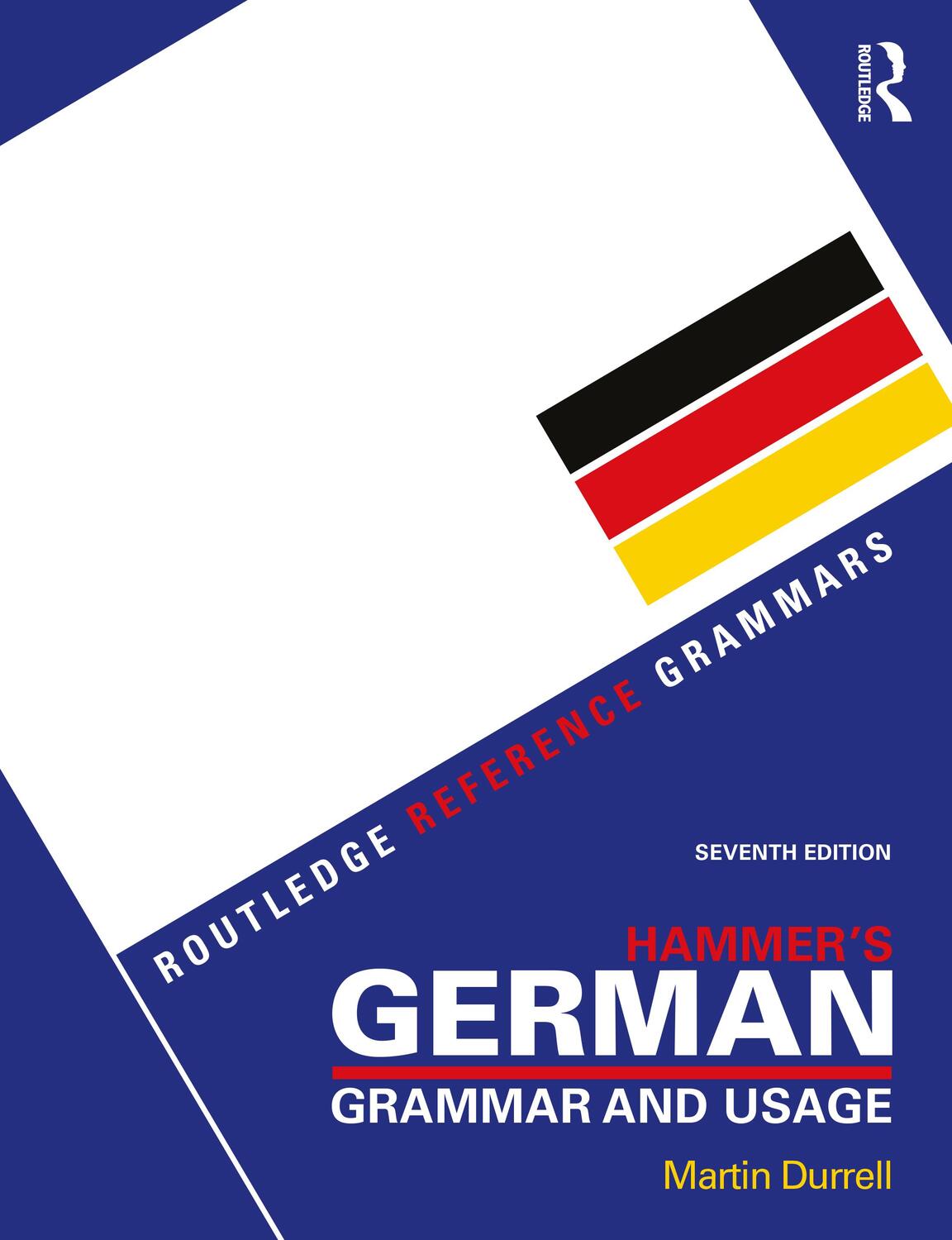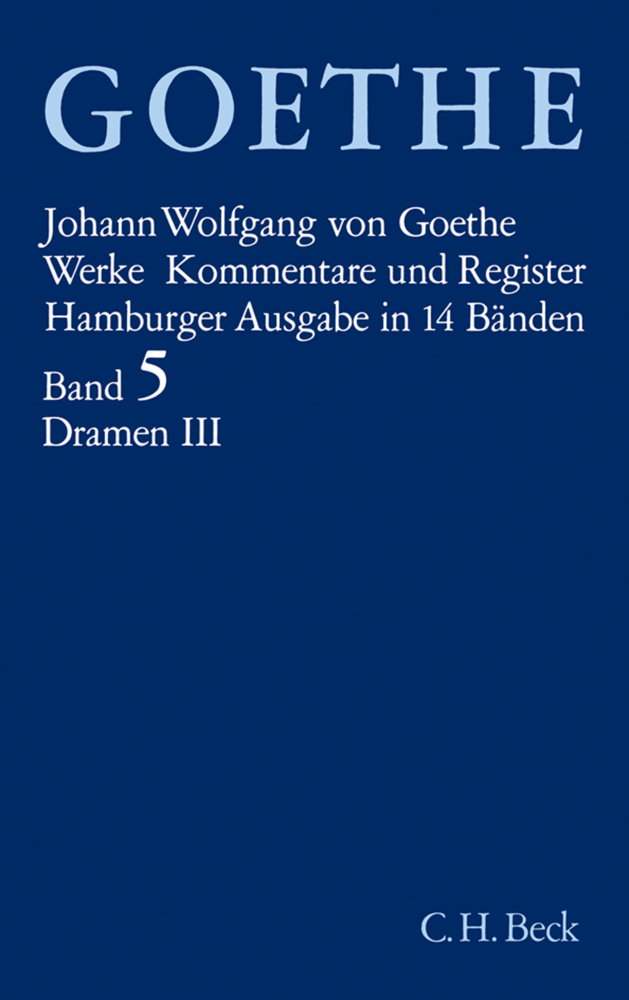52,65 €*
Versandkostenfrei per Post / DHL
Lieferzeit 1-2 Wochen
Long trusted as the most comprehensive, up-to-date and user-friendly grammar available, Hammer's German Grammar and Usage provides you with a complete guide to German as it is written and spoken today. Praised for its lucid explanations, this new edition explains and clearly distinguishes formal and informal spoken and written usage.
Long trusted as the most comprehensive, up-to-date and user-friendly grammar available, Hammer's German Grammar and Usage provides you with a complete guide to German as it is written and spoken today. Praised for its lucid explanations, this new edition explains and clearly distinguishes formal and informal spoken and written usage.
Martin Durrell is Emeritus Professor of German at the University of Manchester, UK.
Contents
List of tables
Abbreviations and points for the user
Preface to the seventh edition
Acknowledgements
The phonetic alphabet
1 Nouns
1.1 Noun gender
1.2 Noun plurals
1.3 The declension of nouns to show case
2 Case
2.1 The nominative case
2.2 The accusative case
2.3 The genitive case
2.4 Genitive case or von?
2.5 The dative case
2.6 Apposition
2.7 Measurement phrases: genitive, von or apposition?
3 Personal pronouns
3.1 The forms of the personal pronouns
3.2 Reflexive and reciprocal pronouns
3.3 Pronouns of address: du, ihr and Sie
3.4 Third person pronouns
3.5 The prepositional adverb
3.6 The pronoun es
4 The articles
4.1 The declension of the articles
4.2 The definite article with abstract and similar nouns
4.3 The use of articles in generalizations
4.4 Articles with geographical and other proper names
4.5 The use of articles in time expressions
4.6 Definite article or possessive?
4.7 Other uses of the definite article
4.8 The 'zero article'
4.9 Article use with phrasal verbs
4.10 Article use with prepositions
5 Other determiners and pronouns
5.1 Demonstratives
5.2 Possessives
5.3 Interrogatives
5.4 Relative pronouns
5.5 Indefinites, quantifiers and other determiners and pronouns
6 Adjectives
6.1 Declension and use of adjectives
6.2 Adjectives used as nouns
6.3 Cases with adjectives
6.4 Adjectives with prepositions
6.5 Comparison of adjectives
7 Adverbs
7.1 Adverbs of place
7.2 Adverbs of direction: hin and her
7.3 Adverbs of time
7.4 Adverbs of manner, viewpoint, attitude and reason
7.5 Adverbs of degree
7.6 Interrogative adverbs
7.7 Comparison of adverbs
8 Numerals
8.1 Cardinal numbers
8.2 Ordinal numbers
8.3 Fractions and decimals
8.4 Other numerical usages
8.5 Times and dates
8.6 Addresses
9 Modal particles
9.1 German modal particles
10 Verbs: conjugation
10.1 Verb conjugation
10.2 The simple tenses, the non-finite forms and the imperative
10.3 The compound tenses
10.4 The werden-passive and the sein-passive
10.5 The subjunctive
10.6 Forms of strong and irregular verbs
11 The infinitive and the participles
11.1 Forms of the infinitive
11.2 The infinitive with zu
11.3 The infinitive without zu
11.4 Infinitives used as nouns
11.5 The present and past participles
11.6 English constructions with the '-ing' form
12 The tenses
12.1 The present tense
12.2 The past and perfect tenses
12.3 The future and future perfect tenses
12.4 The pluperfect tense
12.5 German equivalents for the English progressive tenses
13 The passive
13.1 The werden-passive
13.2 The sein-passive
13.3 von and durch with the passive
13.4 Other passive constructions
14 Mood: the imperative and the subjunctive
14.1 Commands and the imperative
14.2 The subjunctive: forms and uses
14.3 Conditional sentences
14.4 Indirect speech
14.5 Other uses of the subjunctive
15 The modal auxiliaries
15.1 The modal auxiliaries: form and syntax
15.2 dürfen
15.3 können
15.4 mögen
15.5 müssen
15.6 sollen
15.7 wollen
16 Verbs: valency
16.1 Valency, complements and sentence patterns
16.2 The subject
16.3 The accusative object
16.4 The dative object
16.5 Prepositional objects
16.6 Predicate complements
16.7 Genitive objects
16.8 Locative complements
17 Conjunctions and subordination
17.1 Coordinating conjunctions
17.2 Noun clauses
17.3 Conjunctions of time
17.4 Causal conjunctions
17.5 Conjunctions of purpose and result
17.6 Concessive conjunctions
17.7 Conjunctions of manner and degree
18 Prepositions
18.1 Prepositions governing the accusative case
18.2 Prepositions governing the dative case
18.3 Prepositions governing the accusative or the dative case
18.4 Prepositions governing the genitive case
18.5 German equivalents for English 'to'
19 Word order
19.1 Clause structure and the position of the verb
19.2 Initial position in main clause statements
19.3 The order of other elements in the sentence
19.4 The order of noun and pronoun subject and objects
19.5 The place and order of adverbials
19.6 The position of nicht
19.7 The position of verb complements
19.8 Elements following the final verbal bracket: the Nachfeld
20 Word formation
20.1 Methods of word formation
20.2 The formation of nouns
20.3 The formation of adjectives
20.4 Verb formation: general
20.5 Inseparable verb prefixes
20.6 Separable verb prefixes
20.7 Variable verb prefixes
20.8 Verb formation by means other than prefixes
21 Spelling, pronunciation and punctuation
21.1 Spelling and pronunciation
21.2 Capital letters
21.3 One word or two?
21.4 Other points of spelling
21.5 Commas
21.6 Other punctuation marks
List of sources
Bibliography and references
Glossary
Index
| Erscheinungsjahr: | 2021 |
|---|---|
| Fachbereich: | Erwachsenenbildung |
| Produktart: | Schulbücher |
| Rubrik: | Schule & Lernen |
| Thema: | Volkshochschule |
| Medium: | Taschenbuch |
| Seiten: | 638 |
| Inhalt: | Einband - flex.(Paperback) |
| ISBN-13: | 9780367150266 |
| ISBN-10: | 0367150263 |
| Sprache: | Deutsch |
| Einband: | Kartoniert / Broschiert |
| Autor: | Durrell, Martin |
| Hersteller: | Taylor & Francis Ltd |
| Maße: | 248 x 191 x 37 mm |
| Von/Mit: | Martin Durrell |
| Erscheinungsdatum: | 31.05.2021 |
| Gewicht: | 1,365 kg |
Martin Durrell is Emeritus Professor of German at the University of Manchester, UK.
Contents
List of tables
Abbreviations and points for the user
Preface to the seventh edition
Acknowledgements
The phonetic alphabet
1 Nouns
1.1 Noun gender
1.2 Noun plurals
1.3 The declension of nouns to show case
2 Case
2.1 The nominative case
2.2 The accusative case
2.3 The genitive case
2.4 Genitive case or von?
2.5 The dative case
2.6 Apposition
2.7 Measurement phrases: genitive, von or apposition?
3 Personal pronouns
3.1 The forms of the personal pronouns
3.2 Reflexive and reciprocal pronouns
3.3 Pronouns of address: du, ihr and Sie
3.4 Third person pronouns
3.5 The prepositional adverb
3.6 The pronoun es
4 The articles
4.1 The declension of the articles
4.2 The definite article with abstract and similar nouns
4.3 The use of articles in generalizations
4.4 Articles with geographical and other proper names
4.5 The use of articles in time expressions
4.6 Definite article or possessive?
4.7 Other uses of the definite article
4.8 The 'zero article'
4.9 Article use with phrasal verbs
4.10 Article use with prepositions
5 Other determiners and pronouns
5.1 Demonstratives
5.2 Possessives
5.3 Interrogatives
5.4 Relative pronouns
5.5 Indefinites, quantifiers and other determiners and pronouns
6 Adjectives
6.1 Declension and use of adjectives
6.2 Adjectives used as nouns
6.3 Cases with adjectives
6.4 Adjectives with prepositions
6.5 Comparison of adjectives
7 Adverbs
7.1 Adverbs of place
7.2 Adverbs of direction: hin and her
7.3 Adverbs of time
7.4 Adverbs of manner, viewpoint, attitude and reason
7.5 Adverbs of degree
7.6 Interrogative adverbs
7.7 Comparison of adverbs
8 Numerals
8.1 Cardinal numbers
8.2 Ordinal numbers
8.3 Fractions and decimals
8.4 Other numerical usages
8.5 Times and dates
8.6 Addresses
9 Modal particles
9.1 German modal particles
10 Verbs: conjugation
10.1 Verb conjugation
10.2 The simple tenses, the non-finite forms and the imperative
10.3 The compound tenses
10.4 The werden-passive and the sein-passive
10.5 The subjunctive
10.6 Forms of strong and irregular verbs
11 The infinitive and the participles
11.1 Forms of the infinitive
11.2 The infinitive with zu
11.3 The infinitive without zu
11.4 Infinitives used as nouns
11.5 The present and past participles
11.6 English constructions with the '-ing' form
12 The tenses
12.1 The present tense
12.2 The past and perfect tenses
12.3 The future and future perfect tenses
12.4 The pluperfect tense
12.5 German equivalents for the English progressive tenses
13 The passive
13.1 The werden-passive
13.2 The sein-passive
13.3 von and durch with the passive
13.4 Other passive constructions
14 Mood: the imperative and the subjunctive
14.1 Commands and the imperative
14.2 The subjunctive: forms and uses
14.3 Conditional sentences
14.4 Indirect speech
14.5 Other uses of the subjunctive
15 The modal auxiliaries
15.1 The modal auxiliaries: form and syntax
15.2 dürfen
15.3 können
15.4 mögen
15.5 müssen
15.6 sollen
15.7 wollen
16 Verbs: valency
16.1 Valency, complements and sentence patterns
16.2 The subject
16.3 The accusative object
16.4 The dative object
16.5 Prepositional objects
16.6 Predicate complements
16.7 Genitive objects
16.8 Locative complements
17 Conjunctions and subordination
17.1 Coordinating conjunctions
17.2 Noun clauses
17.3 Conjunctions of time
17.4 Causal conjunctions
17.5 Conjunctions of purpose and result
17.6 Concessive conjunctions
17.7 Conjunctions of manner and degree
18 Prepositions
18.1 Prepositions governing the accusative case
18.2 Prepositions governing the dative case
18.3 Prepositions governing the accusative or the dative case
18.4 Prepositions governing the genitive case
18.5 German equivalents for English 'to'
19 Word order
19.1 Clause structure and the position of the verb
19.2 Initial position in main clause statements
19.3 The order of other elements in the sentence
19.4 The order of noun and pronoun subject and objects
19.5 The place and order of adverbials
19.6 The position of nicht
19.7 The position of verb complements
19.8 Elements following the final verbal bracket: the Nachfeld
20 Word formation
20.1 Methods of word formation
20.2 The formation of nouns
20.3 The formation of adjectives
20.4 Verb formation: general
20.5 Inseparable verb prefixes
20.6 Separable verb prefixes
20.7 Variable verb prefixes
20.8 Verb formation by means other than prefixes
21 Spelling, pronunciation and punctuation
21.1 Spelling and pronunciation
21.2 Capital letters
21.3 One word or two?
21.4 Other points of spelling
21.5 Commas
21.6 Other punctuation marks
List of sources
Bibliography and references
Glossary
Index
| Erscheinungsjahr: | 2021 |
|---|---|
| Fachbereich: | Erwachsenenbildung |
| Produktart: | Schulbücher |
| Rubrik: | Schule & Lernen |
| Thema: | Volkshochschule |
| Medium: | Taschenbuch |
| Seiten: | 638 |
| Inhalt: | Einband - flex.(Paperback) |
| ISBN-13: | 9780367150266 |
| ISBN-10: | 0367150263 |
| Sprache: | Deutsch |
| Einband: | Kartoniert / Broschiert |
| Autor: | Durrell, Martin |
| Hersteller: | Taylor & Francis Ltd |
| Maße: | 248 x 191 x 37 mm |
| Von/Mit: | Martin Durrell |
| Erscheinungsdatum: | 31.05.2021 |
| Gewicht: | 1,365 kg |













